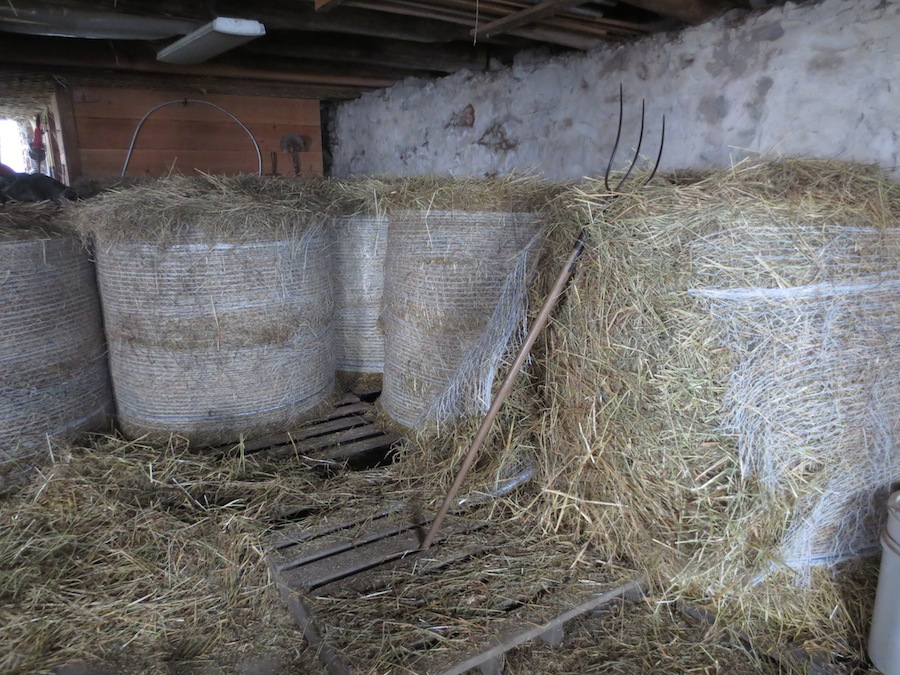The good news-- The moveable pig pen is effective, the pigs are ripping apart the briars. Everyday I move the pen forward 16' and leave behind tilled ground. Depending on the weather, I refill the water tote from our cistern and move it uphill from the pen. The feeder holds 350# of feed but at this point I only add 150#s at a time.
The not so good news-- The pen is on a slope so those pigs can take a running start and jump out of the pen. The pigs do not wander far and they come to me, especially when I shake the scoop with corn. Last night we set a swine panel over the top of the pen to prevent jumping.
The figuring it out news-- The rooting action of the pigs leaves craters in the field. I need to smooth out the rutted swath left by the pigs. Whatever method I come up with, I want it to follow closely behind the pigs so I can plant soon after the porcine disturbance; I need to manage it with my small skidsteer or Farmall Cub tractor; and I should not add considerably to the time spent managing the pigs and pasture.

